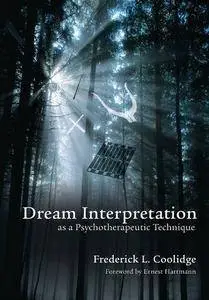Dream Interpretation as a Psychotherapeutic Technique by Frederick L. Coolidge
English | 2016 | ISBN: 1846190177 | 176 Pages | PDF | 8.30 MB
English | 2016 | ISBN: 1846190177 | 176 Pages | PDF | 8.30 MB
This inspiring new book covers the practical side of dream interpretation during the therapeutic consultation. It aids the understanding of sleep and dreams in a scientific context and provides and introduction to the biological and evolutionary foundations of sleep, dreams and dream interpretation, supporting its use in professional counselling. "Dream Interpretation as a Psychotherapeutic Technique" covers cultural, historical and religious foundations of dreams and dream interpretation, and gives an overview of the various dream interpretation theories. Psychotherapists and psychiatrists with an interest in dream interpretation will find this guide invaluable. It will also be of great interest to psychologists, counsellors, therapists and general readers. 'Excellent and very accessible, helpful, useful and flexible. I would recommend this book to any student or beginning therapist interested in working with dreams.' - Ernest Hartmann, in the Foreword. 'This is an essential book on sleep, dreams, and dream interpretation. It will reawaken dream interpretation in clinical practice as a pragmatic tool for client self-awareness.' - T Gayle Yamazki. 'A life-long student of dreams brings decades of research and practice to bear in this scholarly and fascinating work. Coolidge reveals ancient writings, the influence of human evolution on our dream life, and the latest scientific insights. In the tradition of Freud, Jung, and Perls, he uses disarming personal examples, as well as those of his subjects to teach principles of dream interpretation. The practical steps he has developed quickly enrich the therapy process.' - Michael Galvin.



